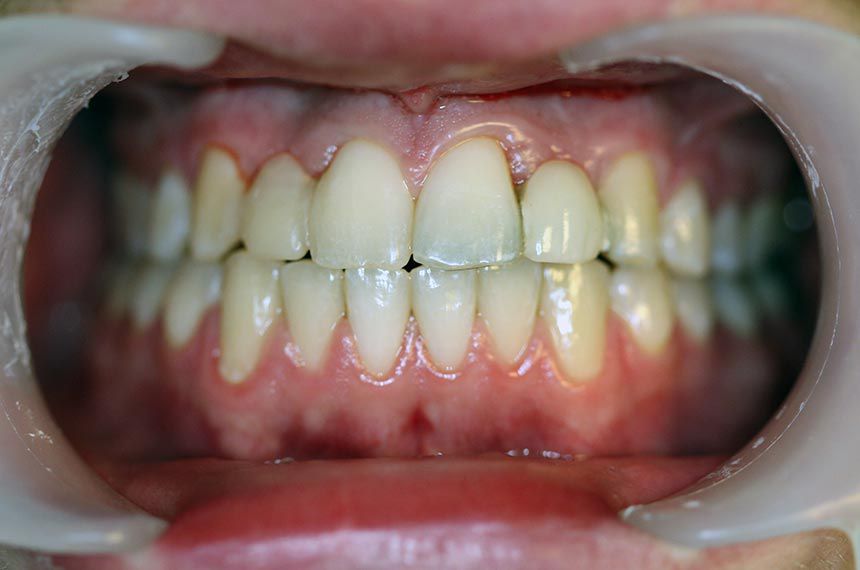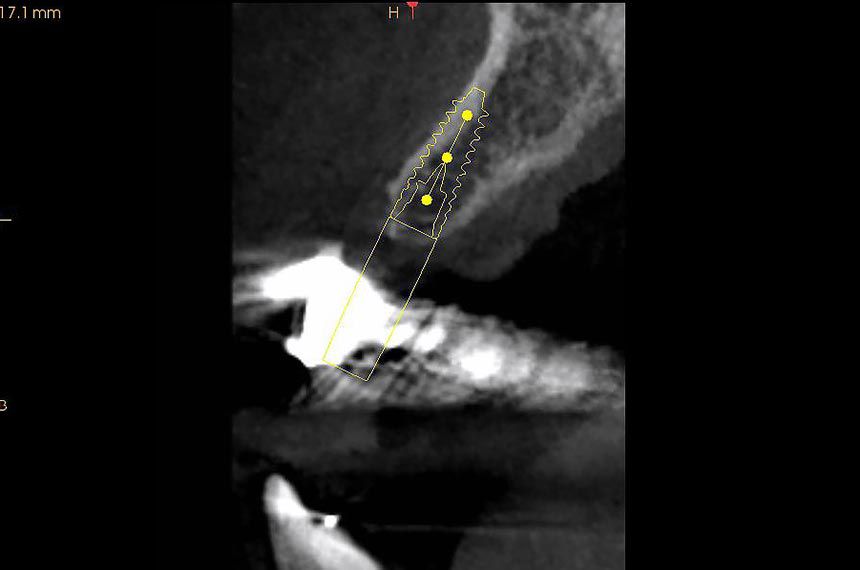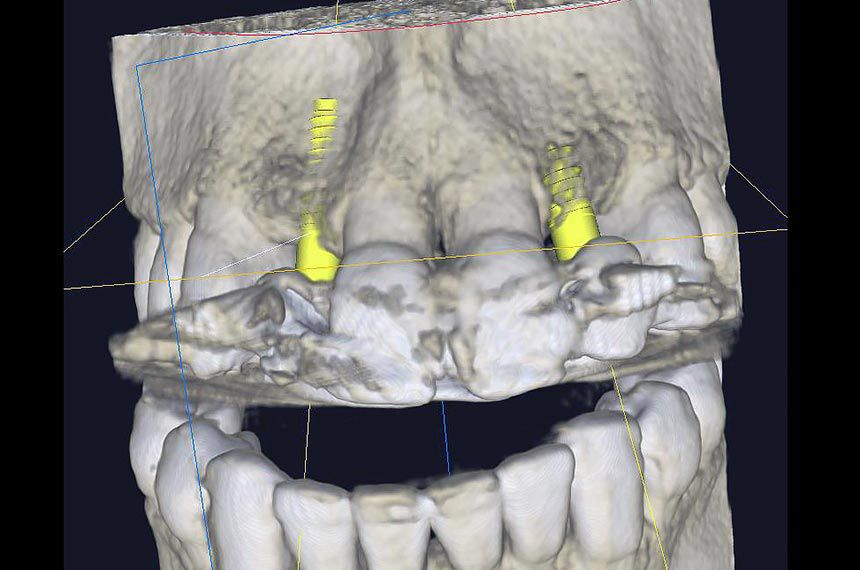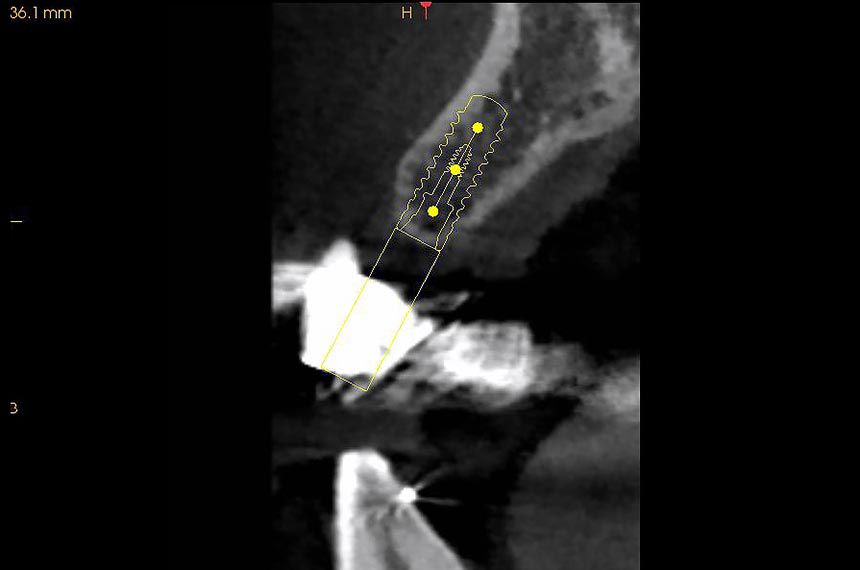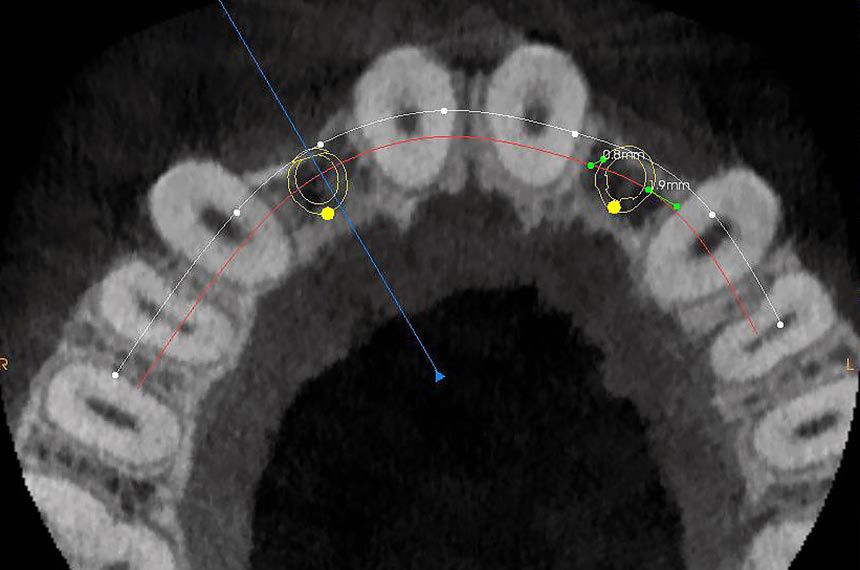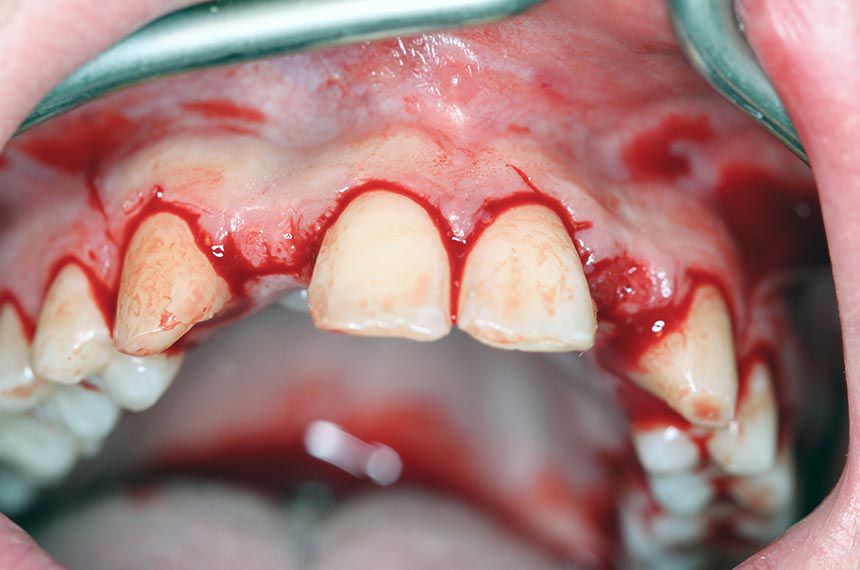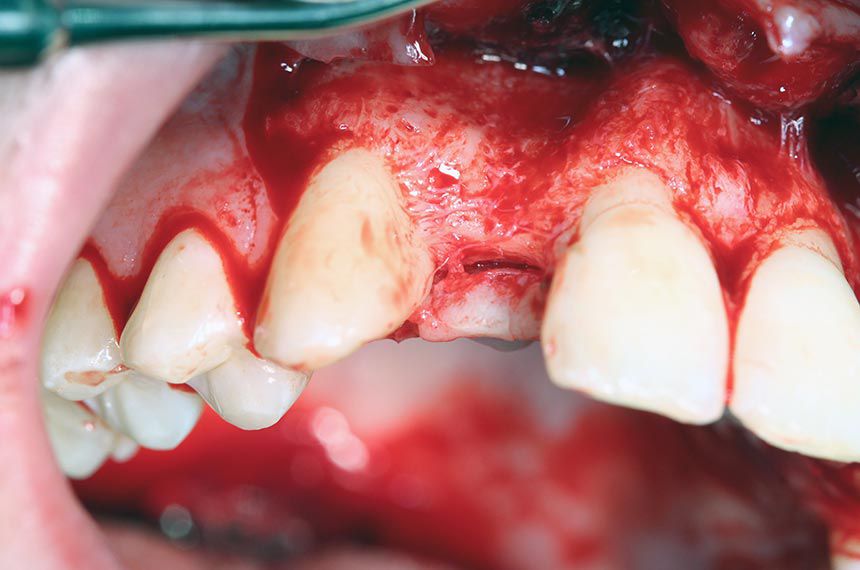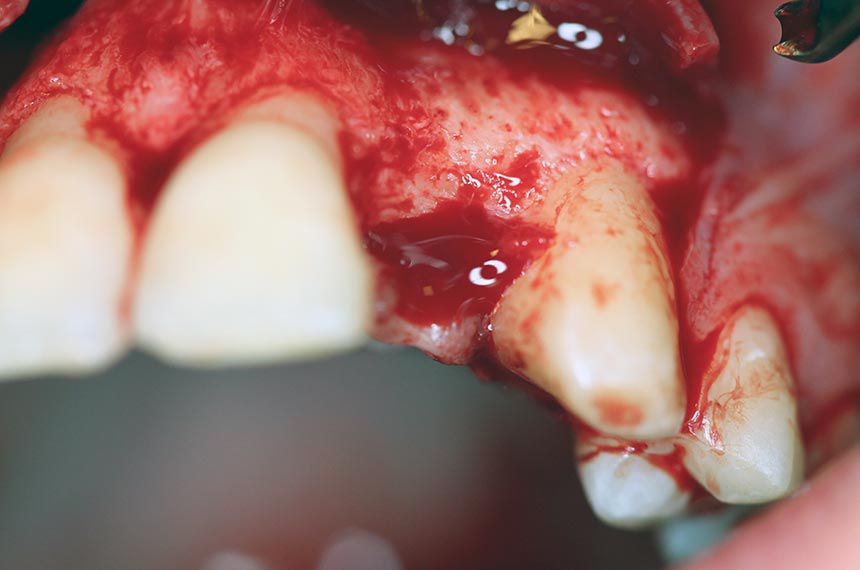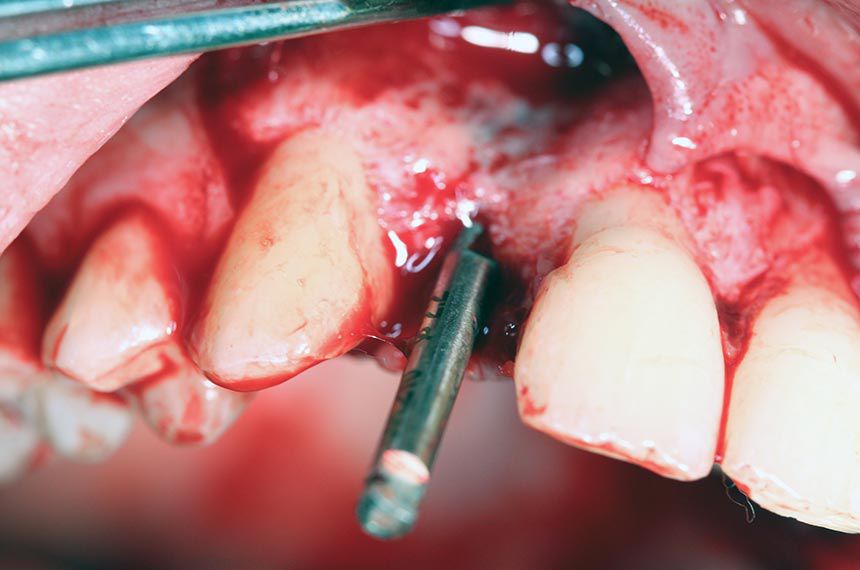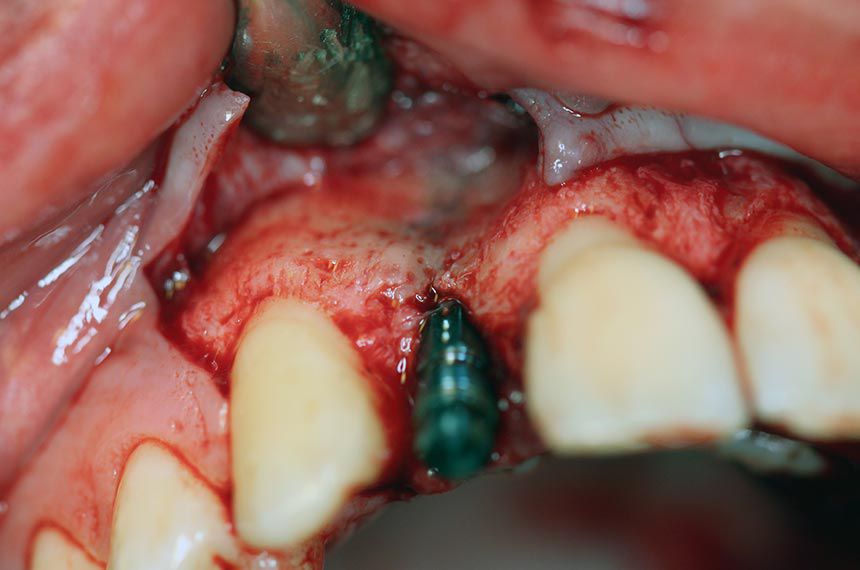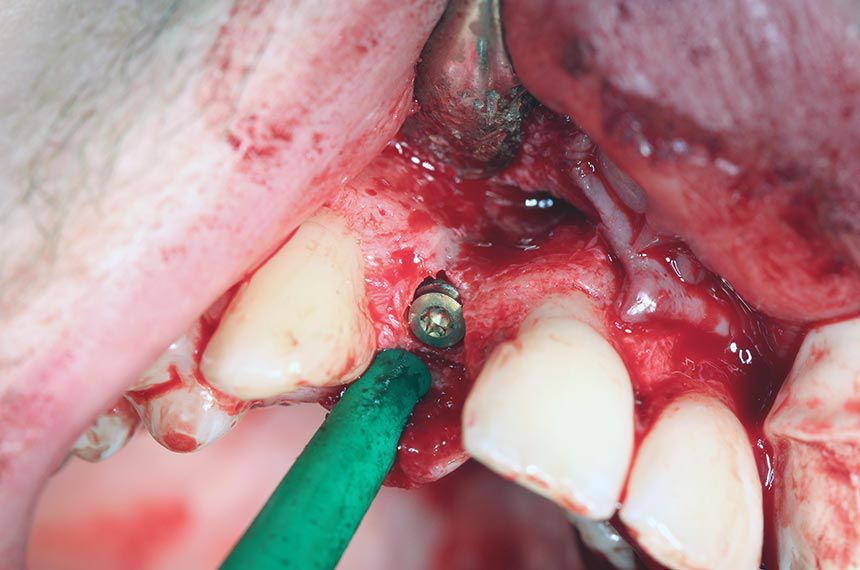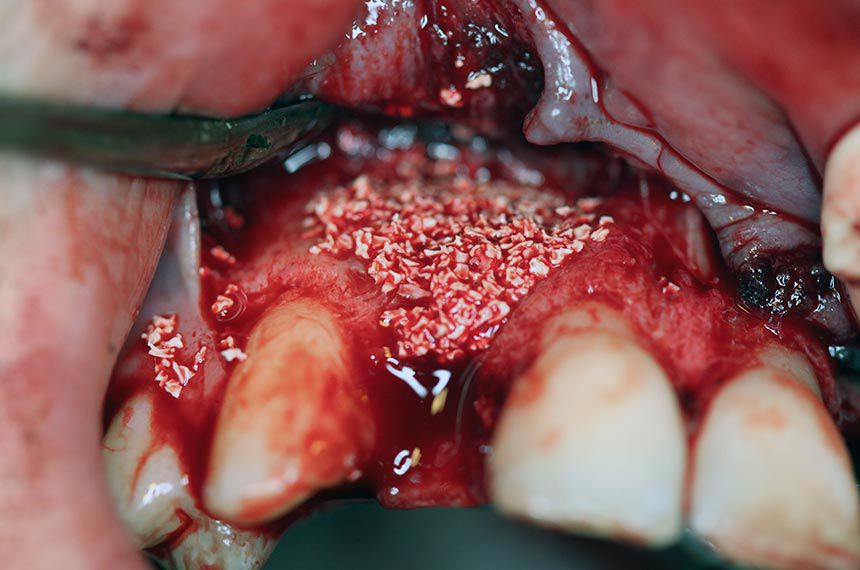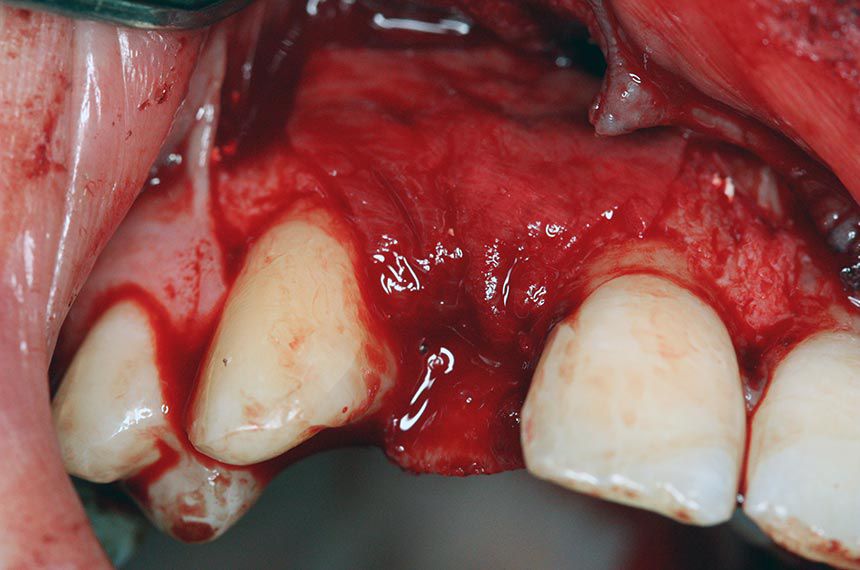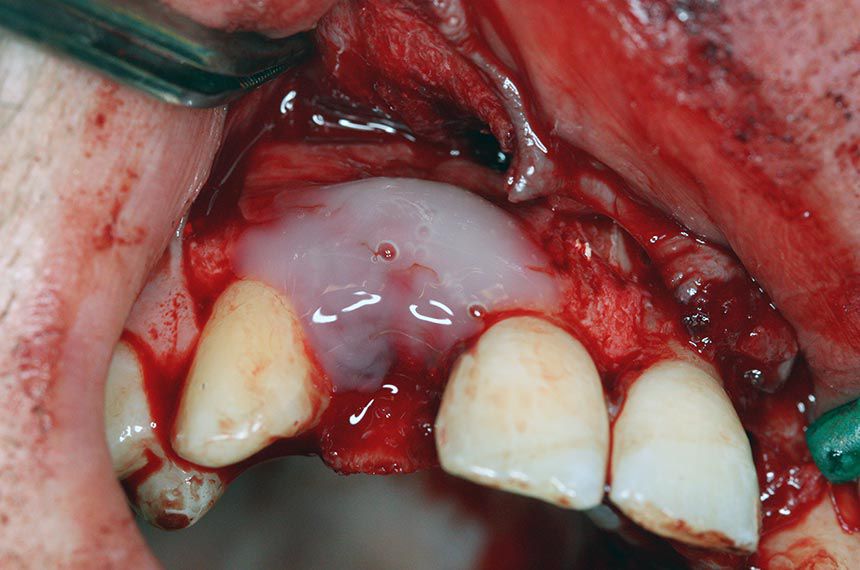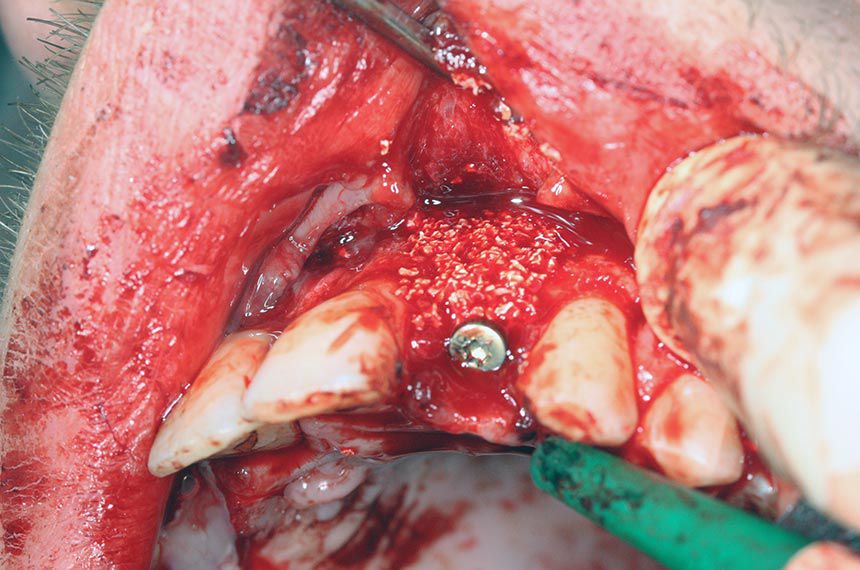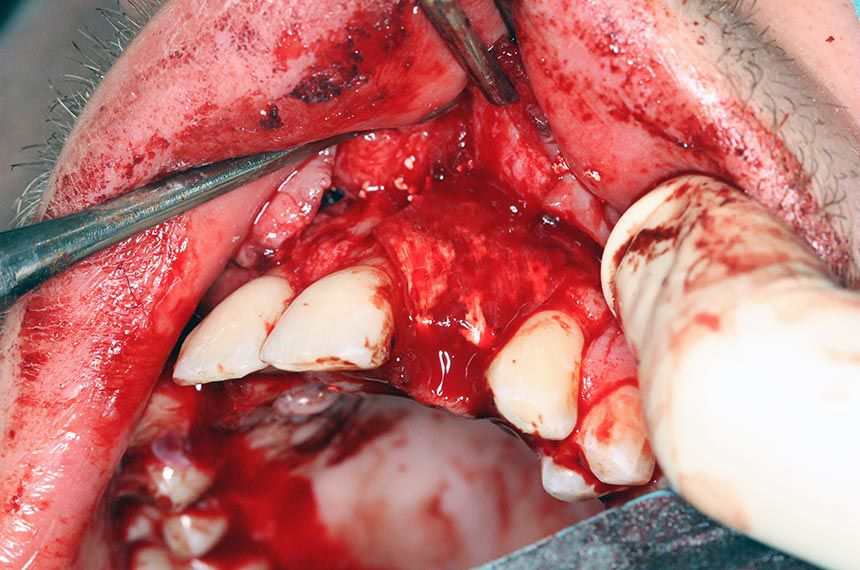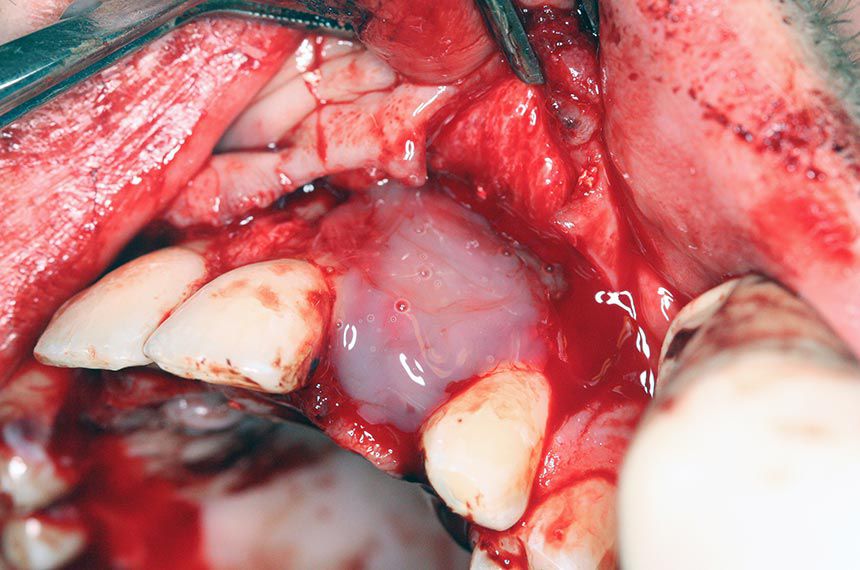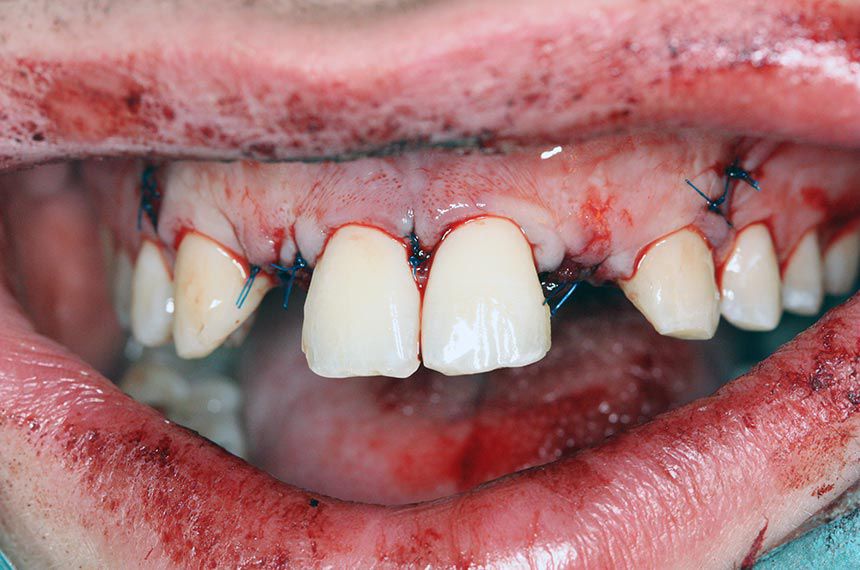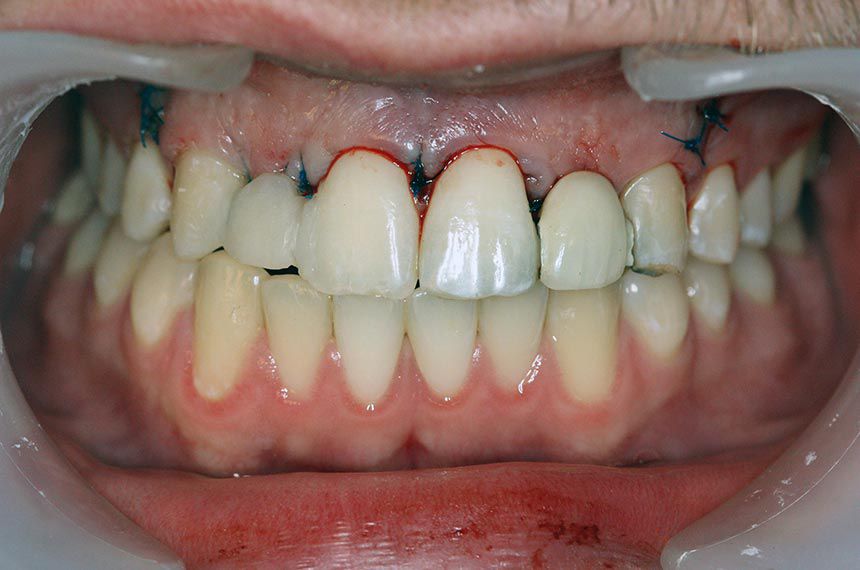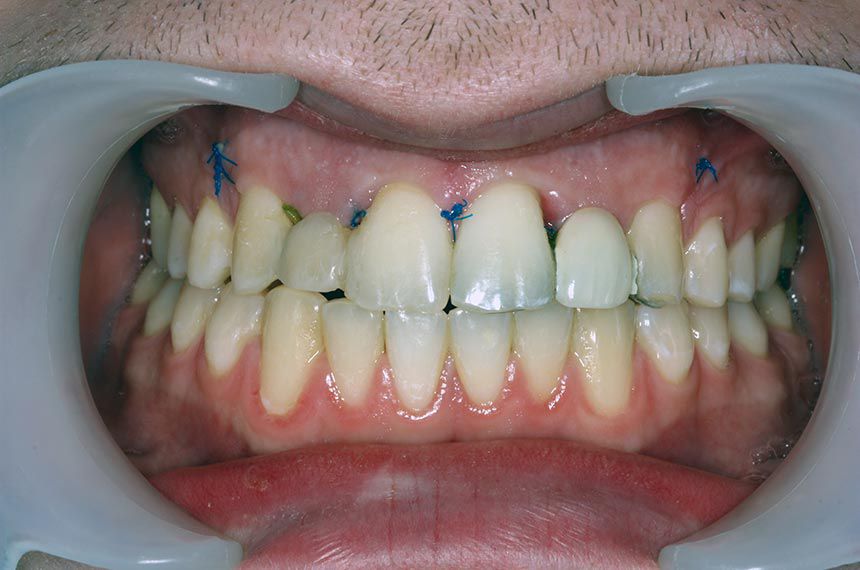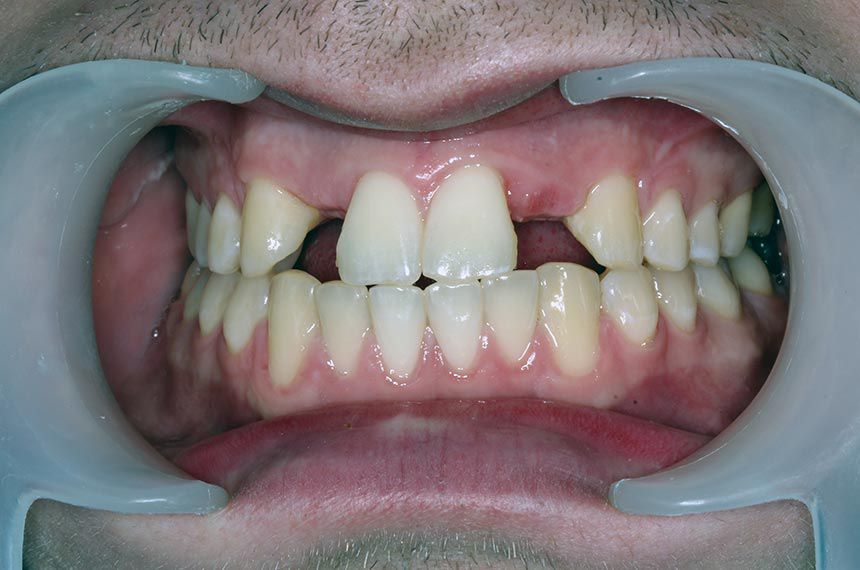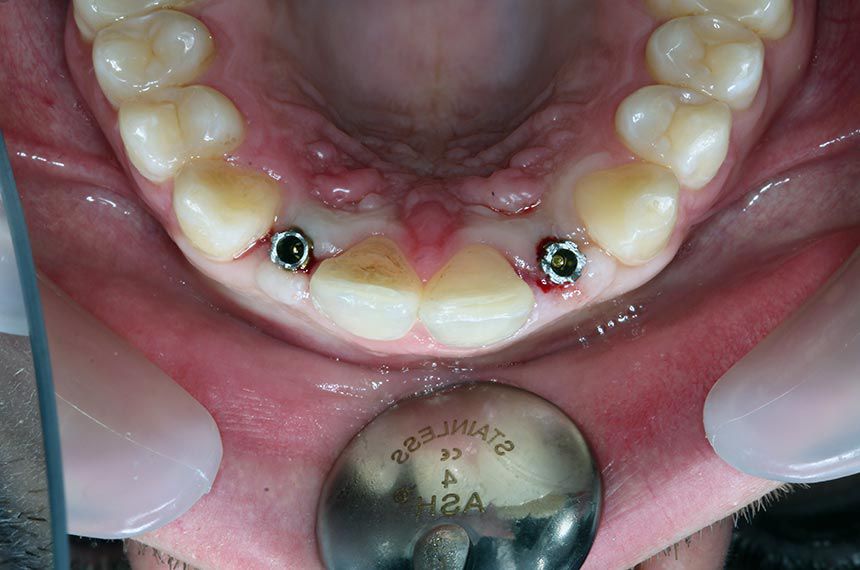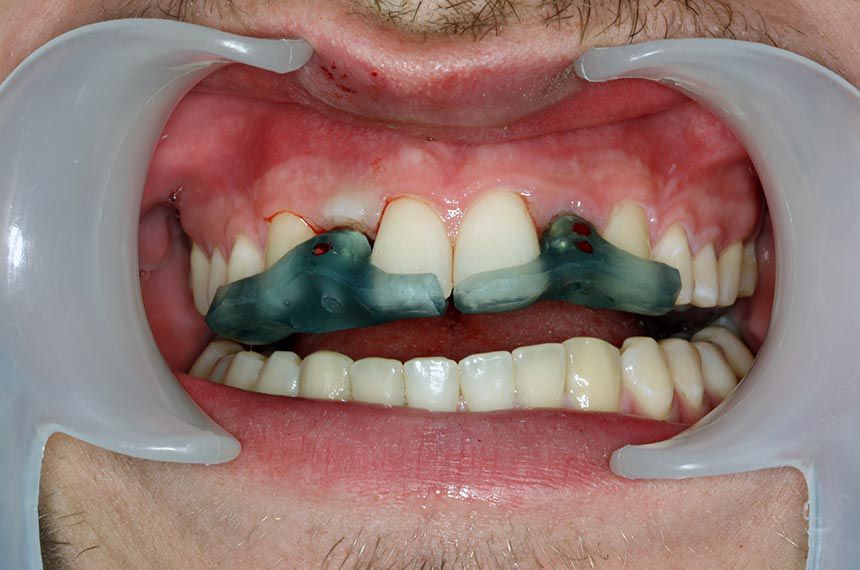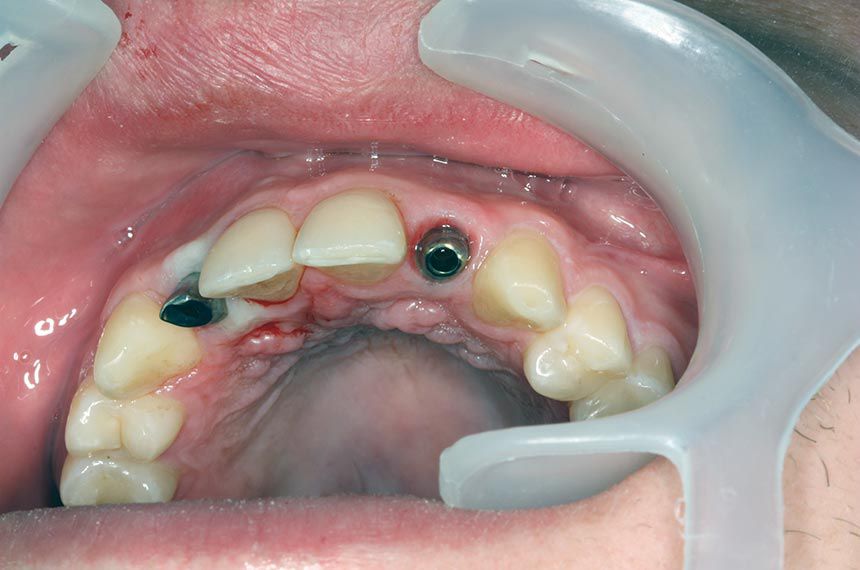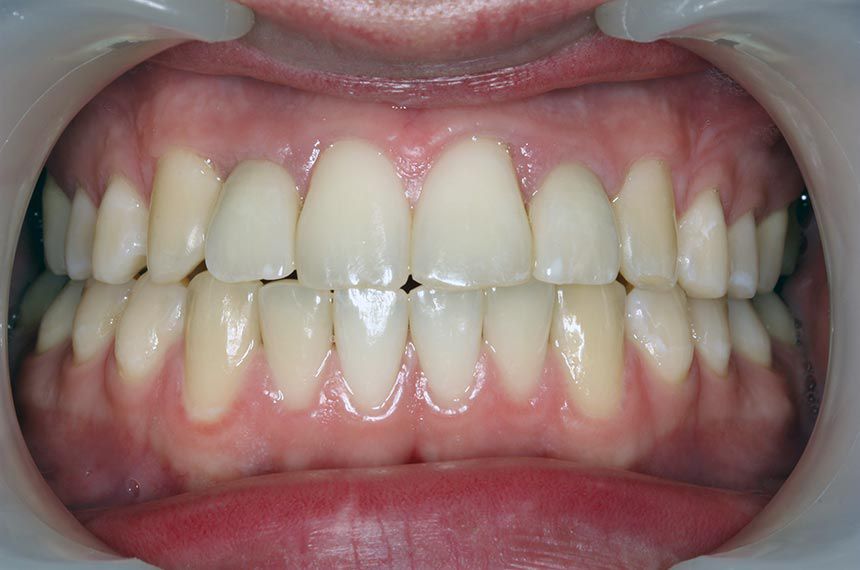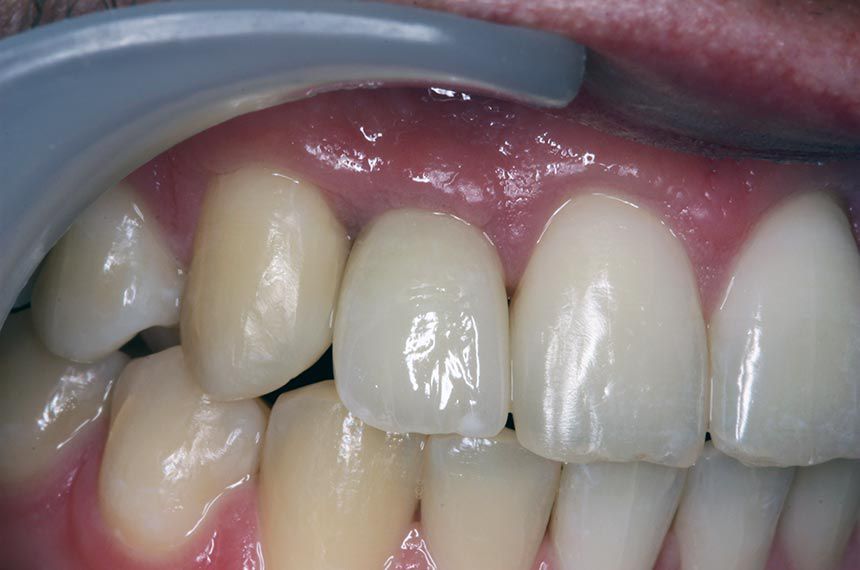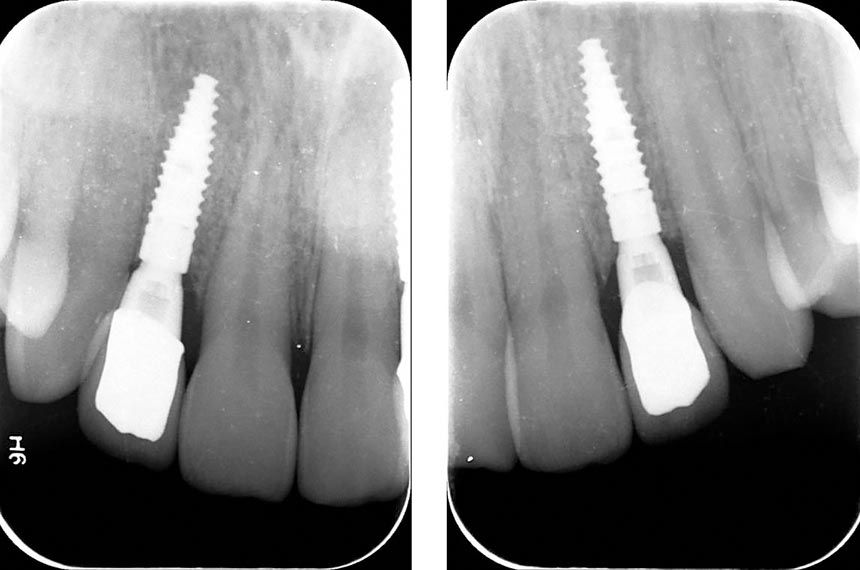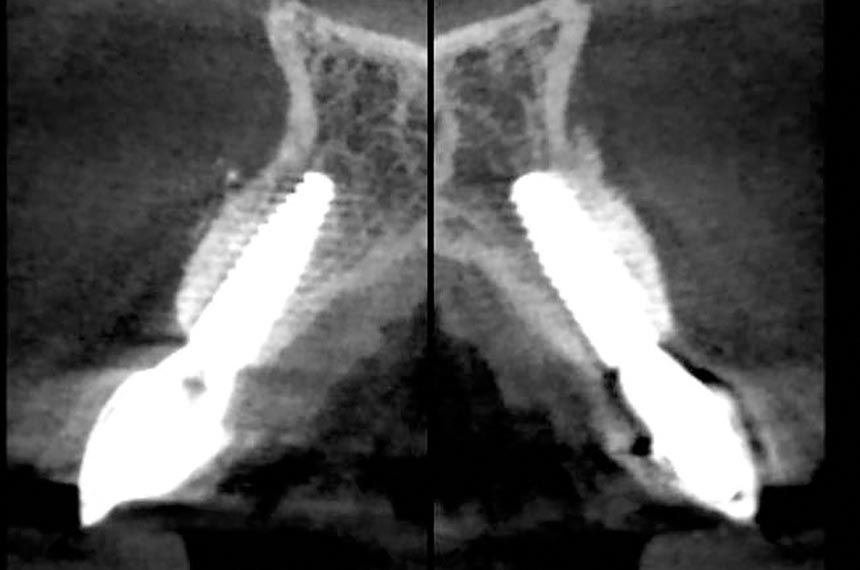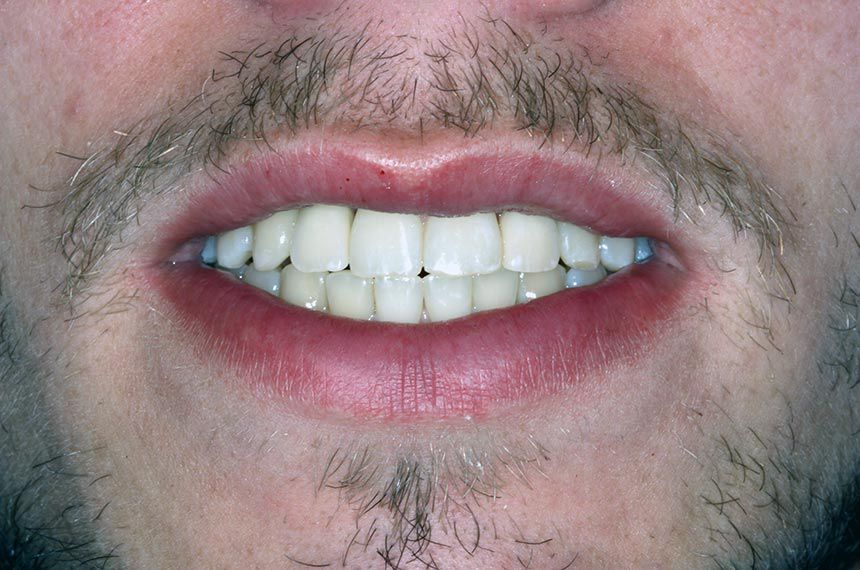“Straumann® BLT implants in combination with botiss biomaterials (cerabone® and Jason® membrane) and Straumann Emdogain® made this challenging case uncomplicated, with only minimal patient discomfort after surgery and a very good esthetic result.” Dr. Michael Kristensen
Initial situation
The patient, a healthy 22-year-old male, has agenesis of 12 and 22, which had previously been treated with Maryland bridges. (Fig. 1) He was referred to the implant clinic by a colleague for esthetic reasons.
Treatment planning
CBCT scans (Figs. 2-5) showed limited space between the roots, but this was sufficient for 3.3 mm Straumann® Bone Level Tapered (BLT) Implants. The ridge was very thin (as in all agenesis patients) and needed horizontal augmentation in order to have at least 1 mm of bone on the buccal side. Since the bone volume was sufficient for primary stability of the implants, the horizontal augmentation was done together with insertion of the implants.
Surgical procedure

